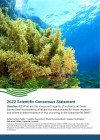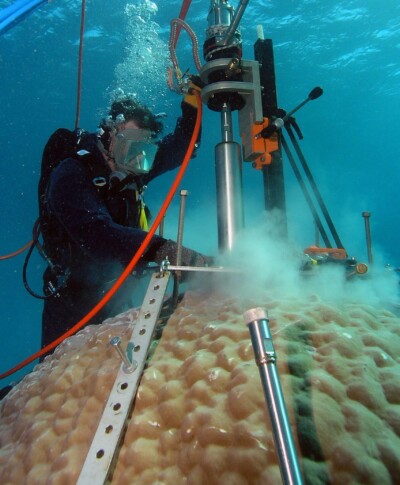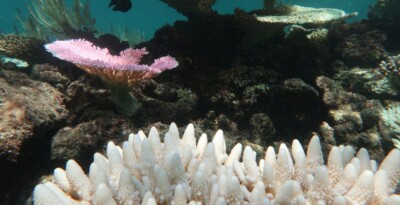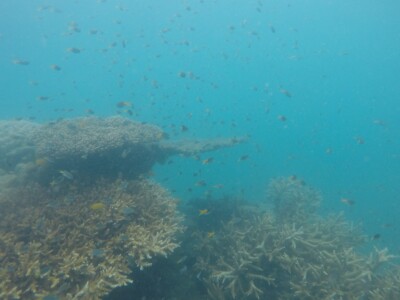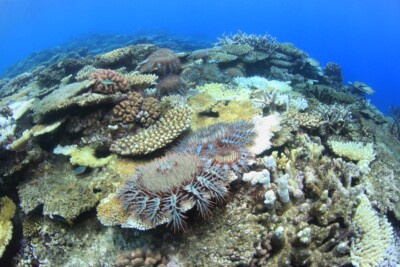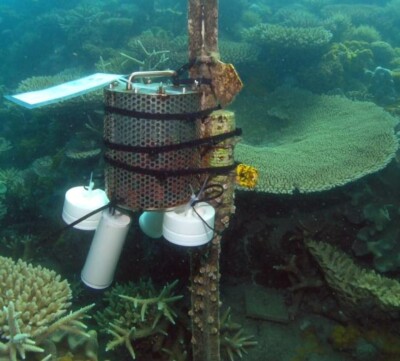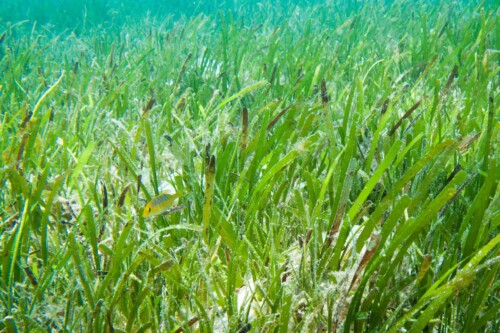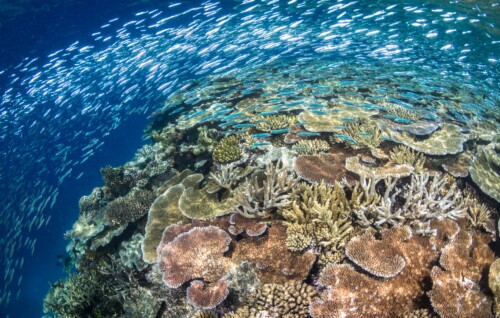Dissolved nutrients

What are the measured impacts of nutrients on Great Barrier Reef ecosystems, what are the mechanism(s) for those impacts and where is there evidence of this occurring in the Great Barrier Reef? [Q4.2]
Authors: Guillermo Diaz-Pulido1,2, Catalina Reyes-Nivia3, Maria Fernanda Adame2, Angela Arthington2, Catherine Collier4, Catherine Lovelock5
Affiliations: 1School of Environment and Science, Coastal and Marine Research Centre, Griffith University, 2Australian Rivers Institute, Griffith University, 3Great Barrier Reef Foundation, 4Centre for Tropical Water and Aquatic Ecosystem Research (TropWATER), James Cook University, 5School of Biological Sciences, Faculty of Science, The University of Queensland
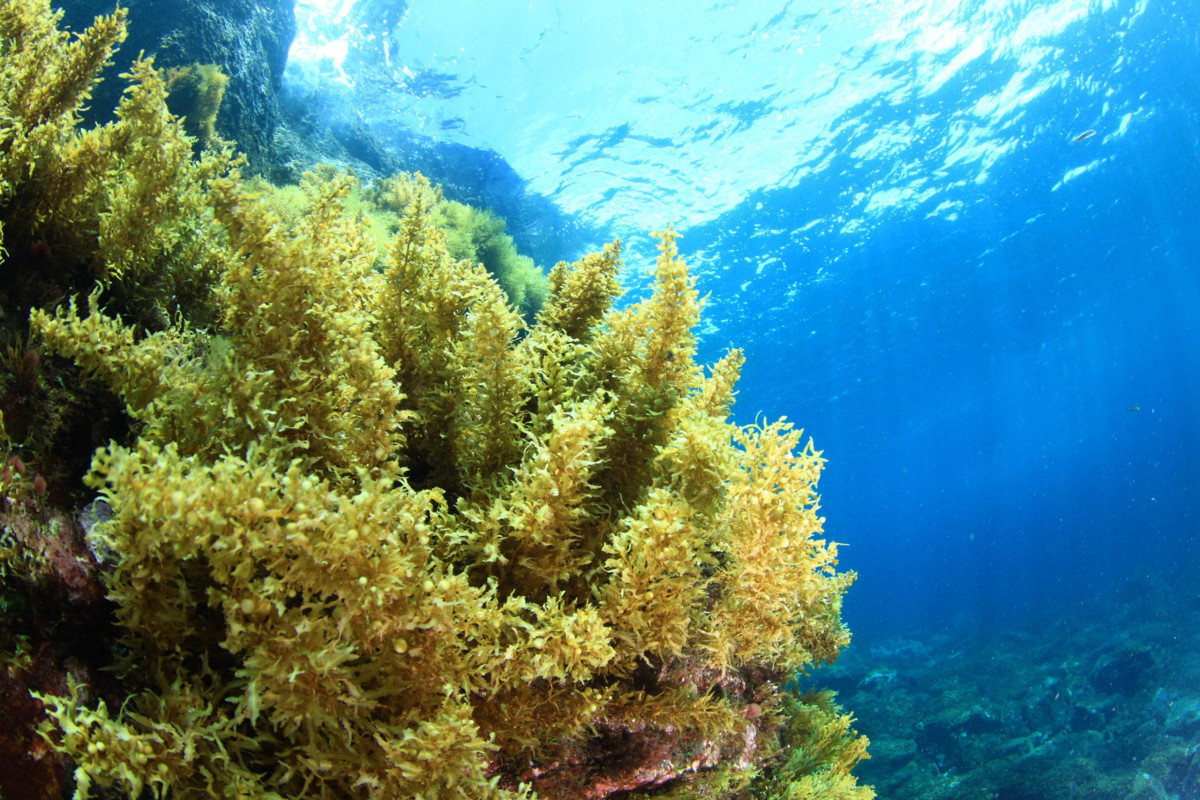
Evidence Statement
The synthesis of the evidence for Question 4.2 was based on 157 studies undertaken primarily in the Great Barrier Reef and published between 1990 and 2023. The synthesis includes a High diversity of study types (43% observational including natural experiments, 29% manipulative experiments, 15% reviews, 12% modelling and 1% commentary), and has a Moderate confidence rating (based on Moderate to Low consistency and Moderate overall relevance of studies).
Summary of findings relevant to policy or management action
In the Great Barrier Reef, dissolved inorganic nutrient availability typically decreases from inshore to offshore areas with the highest concentrations found between Cooktown and Gladstone in waters influenced by river plumes. Dissolved inorganic nutrients are critically important for the overall health and condition of Great Barrier Reef ecosystems but if they occur in excessive amounts, nutrients can have a detrimental effect. The most severe impacts of increased nutrients on corals may be indirect. For instance, elevated nutrient availability on inshore reefs is generally (but not always) positively correlated with increased fleshy macroalgal abundance. High fleshy macroalgae abundance and biomass can reduce coral settlement and recruitment, outcompete corals, reduce coral cover and negatively affect coral calcification. Another indirect effect is the relationship between excess nutrients and increasing phytoplankton food supplies for crown-of-thorns starfish larval stages which can potentially contribute to outbreaks. Direct effects of elevated nutrients include reduced coral calcification, negative impacts on coral reproduction, and potentially lowering thermal tolerance to bleaching. Links between elevated nutrients and other impacts such as coral disease, microbioerosion and microbial communities are variable between studies and locations and require further investigation. There is no clear evidence of direct negative impacts of increased dissolved inorganic nutrients on seagrass ecosystems, and although elevated nutrients may be beneficial for mangrove growth, they can interact with climate stressors such as drought (low rainfall and low humidity) causing mangrove decline. There is limited evidence of the impact of dissolved inorganic nutrients on Great Barrier Reef wetland ecosystems. Regional and basin-specific management of nutrient runoff from the Great Barrier Reef catchment area should remain a priority to support inshore marine ecosystems.
Supporting points
- Macroalgal abundance follows a clear gradient across the Great Barrier Reef shelf, with fleshy macroalgal abundance highest in inshore areas and lowest in offshore areas. Nutrient addition does not always enhance macroalgal growth rates or lead to enhanced biomass, therefore it is simplistic to assume that the macroalgal gradient can only be attributed to land-based inputs of nutrients in inshore reefs. The effects of nutrient enrichment need to be considered in combination with other factors, particularly grazing by fish, sedimentation, ocean acidification and warming.
- Evidence is limited for the effects of dissolved inorganic nitrogen and dissolved inorganic phosphorus on crustose coralline algae (important for reef building), but available studies show enhanced growth under elevated conditions. The lower abundance of crustose coralline algae on inshore reefs compared to offshore reefs may be related to increased sediment loads and a reduced seawater calcium carbonate saturation state in inshore reefs.
- Comparing the effects of dissolved inorganic nutrients between and among regions is challenging due to limited spatial data. Reef communities from the Mackay Whitsunday Natural Resource Management region, and to some extent the Burdekin region have been relatively well studied, but there is a significant lack of information from other areas of the Great Barrier Reef.
- There is still debate about whether elevated dissolved inorganic nitrogen raises the susceptibility of corals to thermal stress and contributes to coral bleaching. Computer simulations both support and reject this hypothesis, and severe mass bleaching of corals in 2016 did not show a water quality effect. However, there is mounting evidence from international research groups that supports the hypothesis that nutrient enhancement can reduce thermal bleaching thresholds in corals.
- Crown-of-thorns starfish larval development can benefit from elevated nutrients which can enhance phytoplankton biomass (measured by chlorophyll a concentration), but up to a limit as excessive phytoplankton concentrations may reduce larval performance. However, there is evidence that crown-of-thorns starfish larvae can also survive in low nutrient water. Elevated nutrients may exacerbate the incidence or severity of outbreaks, but are likely to be one of several contributing factors along with predator removal and inherent life history traits.
- Evidence suggests that declining water quality (increased nutrients and sediment loads combined) contributes to seasonal outbreaks in coral disease in the Great Barrier Reef. However, a direct link between coral disease and dissolved inorganic nutrients has not been demonstrated yet and future studies should specifically address this gap.
- Bioerosion patterns show variable responses in coral reefs across the natural water quality gradient, however there is limited evidence examining the causes. Inshore reefs have lower rates of total bioerosion relative to midshelf and offshore reefs which typically exhibit high bioerosion rates due to the presence of microborers and increased grazing activity by parrotfish. Higher levels of nutrients and organic matter in inshore and midshelf reefs may explain increased abundance of macroborers leading to increased bioerosion rates. These relationships require further investigation.
- Microbial communities are very responsive to elevated nutrients and thus to gradients of water quality across the Great Barrier Reef. The effects cannot be generalised as benthic and planktonic bacterial communities, and microphytobenthos, are highly variable in species composition but this is a rich target for research to find indicators of water quality.
- Phytoplankton biomass (measured as chlorophyll a concentrations) responds positively to nutrient availability. The impact of elevated phytoplankton biomass on coral reefs and seagrass meadows is mostly via reduction of water clarity and consequently reduced light availability for symbiotic corals and seagrasses.
- While elevated nutrients can increase seagrass growth rates and distribution, elevated epiphytic growth has been documented on estuarine seagrasses (possibly from increased nutrients) which can lead to reduction of plant photosynthesis. It is unclear if this condition is contributing to seagrass decline.
- The direct and indirect effects of increased dissolved inorganic nutrients on freshwater streams and wetlands in the Great Barrier Reef is poorly understood and may vary with differences in landscape characteristics, rainfall, flow regimes, and among ecosystems and organisms.
